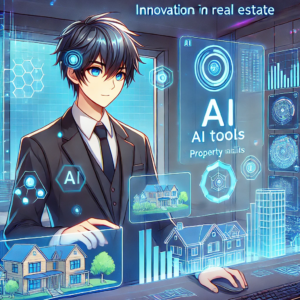How AI Job Replacement Will Actually Play Out: A Comprehensive Analysis
Introduction: The Transformative Landscape of AI Jobs
The artificial intelligence revolution is reshaping our professional ecosystem in ways we never imagined, with AI job displacement becoming a critical conversation across industries.
Every professional today stands at a pivotal crossroads where technological innovation meets human potential, creating unprecedented challenges and opportunities in the workplace.
The fear of AI completely replacing human workers has become a widespread concern, generating anxiety and uncertainty about future employment prospects.
However, the reality of AI job transformation is far more nuanced and complex than simple replacement narratives suggest.
Understanding the intricate dynamics of how artificial intelligence will reshape our professional landscapes requires a deep, multifaceted exploration of technological capabilities, economic implications, and human adaptability.
The narrative of AI job disruption is not about wholesale elimination but rather profound restructuring of work methodologies, skill requirements, and organizational strategies.
Contrary to apocalyptic predictions, intelligent technologies are more likely to augment human capabilities rather than entirely supplant human workers.
By examining current trends, technological advancements, and strategic corporate implementations, we can develop a more realistic and optimistic perspective on AI’s role in our professional future.
We strongly recommend that you check out our guide on how to take advantage of AI in today’s passive income economy.
Table of Contents
The Current State of AI Job Transformation
Microsoft’s Emerging AI Job Strategy
Recent reports from technology giants like Microsoft have begun to explicitly address the potential of AI to transform workforce dynamics.
The company’s leadership has started discussing AI’s capacity to reduce human resource expenditures more openly, signaling a significant shift in corporate technological strategies.
Microsoft’s Chief Marketing Officer for 365 Co-Pilot, highlighted the growing interest from financial executives in understanding precise cost reductions achieved through AI implementation.
This transparency represents a crucial moment in AI job discussions, where companies are no longer shying away from conversations about technological efficiency and workforce optimization.
The AI job market is witnessing an unprecedented level of strategic recalibration, with organizations seeking to leverage intelligent technologies for enhanced productivity and reduced operational costs.
Corporate leaders are increasingly viewing AI not as a threat but as a sophisticated tool for reimagining work processes and creating more streamlined, efficient organizational structures.
The narrative is subtly shifting from replacement to augmentation, emphasizing how AI can complement human skills rather than entirely eliminate professional roles.
By focusing on task optimization and capability enhancement, companies are developing more nuanced approaches to integrating artificial intelligence into their workforce strategies.
Phases of AI Job Transformation
Phase Zero: Exploration and Experimentation
The initial phase of AI job integration has been characterized by extensive exploration and cautious experimentation.
Enterprises have been carefully investigating AI’s potential applications across various business processes, conducting pilot programs and identifying repeatable use cases.
This experimental stage has been crucial in understanding the broad implications of AI job transformation, revealing the technology’s potential to impact virtually every workflow and business process.
Organizations have been testing intelligent systems’ capabilities, gradually building confidence in their potential to enhance operational efficiency.
The uniqueness of this technological disruption lies in its unprecedented scale, depth, and breadth of potential transformation across multiple industries and professional domains.
Unlike previous technological revolutions, AI promises to touch every aspect of professional work, from customer service to complex strategic planning.
Businesses have been mapping out potential AI applications, understanding both the opportunities and challenges presented by these emerging technologies.
This phase has been critical in developing a comprehensive understanding of how AI can be strategically integrated into existing organizational structures.
Phase One: Cost Reduction and Efficiency
The next significant phase in AI job transformation focuses primarily on cost reduction and operational efficiency.
Companies are increasingly viewing artificial intelligence as a powerful tool for streamlining expenses and optimizing existing processes.
Market investors have shown particular enthusiasm for efficiency gains, recognizing the potential for increased profitability through intelligent technological implementation.
However, it’s essential to distinguish between task replacement and comprehensive role elimination in this phase of AI job transformation.
Sophisticated organizations are carefully parsing individual tasks within roles, identifying opportunities for augmentation and optimization rather than wholesale replacement.
Customer support and service sectors have been at the forefront of this transformation, demonstrating the most significant initial disruptions in AI job applications.
Complex domains like sales, marketing, and operations are experiencing more nuanced transformations, emphasizing role redesign over complete elimination.
This approach ensures that human creativity, emotional intelligence, and strategic thinking remain central to organizational success.
Phase Two: Innovation and Capability Expansion
Beyond cost reduction, the next evolutionary stage of AI job integration focuses on innovative capability expansion.
Organizations are exploring how intelligent technologies can help them produce exponentially more content, develop unprecedented service levels, and outperform competitors.
The most forward-thinking companies are simultaneously pursuing cost optimization while positioning themselves for future technological leadership.
AI job strategies are moving beyond mere efficiency, exploring how artificial intelligence can create entirely new product offerings and service methodologies.
By leveraging AI’s capabilities, businesses can generate more comprehensive market insights, develop more targeted marketing strategies, and create more personalized customer experiences.
This phase represents a fundamental reimagining of organizational potential, where technology becomes a catalyst for unprecedented innovation and growth.
Companies are discovering that AI is not just a cost-cutting measure but a powerful platform for creating competitive advantages.
The most successful organizations will be those that view AI as an opportunity creation technology rather than a simple efficiency tool.
Phase Three: Competitive Flourishing
The final transformative phase involves radical competitive differentiation through comprehensive AI integration.
Companies that fully embrace AI as a strategic asset will likely experience dramatic market performance improvements, potentially scooping significant market shares from less adaptive competitors.
The speed of AI job transformation will create clear distinctions between technological leaders and followers, with early adopters gaining substantial competitive advantages.
Market signals will quickly highlight organizations that successfully leverage AI for genuine innovation and capability expansion.
Leadership becomes the critical factor in navigating this complex technological landscape, requiring vision, strategic thinking, and effective stakeholder communication.
Successful AI job integration demands more than technological implementation—it requires a holistic approach to organizational transformation.
Leaders must effectively communicate AI’s potential, alleviating employee fears and convincing investors of the technology’s long-term strategic value.
The most successful organizations will be those that treat AI as a collaborative partner in human potential rather than a replacement technology.
Conclusion: Embracing the AI Job Transformation
The journey of AI job transformation is not about human obsolescence but collaborative evolution.
Intelligent technologies offer unprecedented opportunities for professional growth, skill development, and organizational innovation.
By approaching AI with curiosity, adaptability, and strategic vision, professionals and organizations can unlock remarkable potential.
The future of work is not a battle between humans and machines but a sophisticated dance of complementary capabilities.
Every technological challenge presents an opportunity for learning, adaptation, and unprecedented human creativity.
Those who view AI as a collaborative tool rather than a competitive threat will be best positioned to thrive in the emerging professional landscape.
The AI job revolution is not something to fear but to embrace, understand, and strategically navigate.
Our collective future depends on our ability to see artificial intelligence not as a replacement for human potential, but as a powerful catalyst for its expansion.

We strongly recommend that you check out our guide on how to take advantage of AI in today’s passive income economy.




